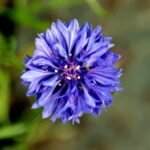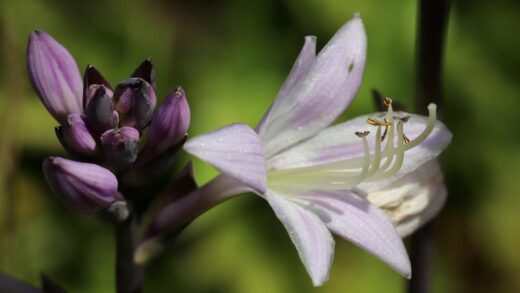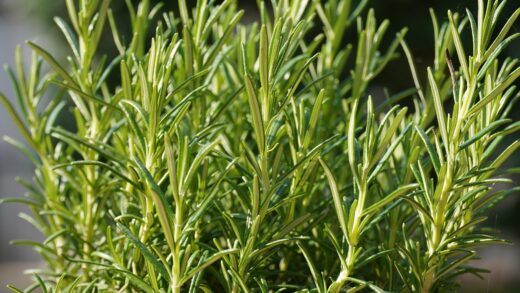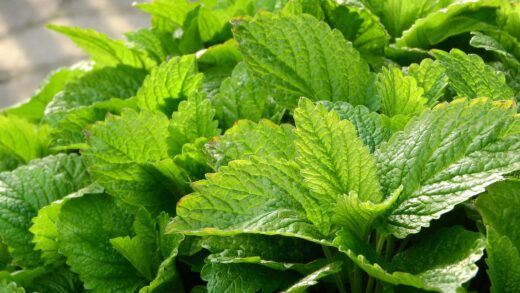The watering and fertilization of the Turk’s cap lily

Providing the appropriate balance of moisture and nutrients is fundamental to cultivating vigorous and floriferous Turk’s cap lilies. These elegant perennials have specific requirements that, when met, result in strong stems, lush foliage, and a breathtaking display of their unique, nodding flowers. Unlike some more forgiving garden plants, Lilium martagon is sensitive to both underwatering and overwatering, making a consistent and thoughtful approach to irrigation essential. Similarly, its nutritional needs must be met with a well-timed and balanced fertilization strategy to support its entire growth cycle, from the initial emergence of its spring shoot to the vital process of replenishing its bulb after flowering. Mastering the art of watering and feeding is a key component in unlocking the full potential of these cherished woodland lilies.
The primary goal of any watering regimen for Turk’s cap lilies is to maintain consistent soil moisture without creating waterlogged conditions. The soil should feel like a well-wrung-out sponge – moist to the touch, but not saturated. This is especially critical during the active growing season in the spring and early summer when the plant is rapidly developing its stem, leaves, and flower buds. During this period of high demand, supplemental watering is often necessary, particularly during dry spells, to prevent the plant from experiencing stress, which can lead to smaller flowers or bud drop.
The method of watering is just as important as the frequency. It is always best to water Turk’s cap lilies deeply at the base of the plant, allowing the water to soak down to the root zone. Overhead watering should be avoided as much as possible, as wetting the foliage and flowers can create an ideal environment for the development of fungal diseases like botrytis. Using a soaker hose or a drip irrigation system is an excellent way to deliver water directly to the soil where it is needed, minimizing evaporation and keeping the leaves dry.
Monitoring the soil moisture is a more reliable guide than watering on a fixed schedule. The frequency of watering will vary depending on factors such as soil type, weather conditions, and the presence of mulch. A simple way to check the moisture level is to insert a finger a few inches into the soil near the base of the plant. If the soil feels dry at this depth, it is time to water. This hands-on approach ensures that the lilies receive water when they actually need it, preventing the common problems associated with both over- and underwatering.
Watering during the active growing season
During the spring and early summer, the Turk’s cap lily is in its most active phase of growth, and its demand for water is at its peak. This is the time when the plant is producing its tall stem, developing its characteristic whorls of leaves, and forming the flower buds that will become the season’s main display. Consistent and adequate moisture is absolutely critical during this period to support this rapid development. Any significant period of drought stress at this stage can result in stunted growth, yellowing leaves, and a reduction in the number and size of the flowers.
More articles on this topic
A strategy of deep, infrequent watering is far more effective than shallow, frequent applications. A deep watering encourages the lily to develop a robust and extensive root system, making it more resilient to periods of drought. When watering, the aim should be to moisten the soil to a depth of at least 15 to 20 centimeters, ensuring that the entire root zone, including the important stem roots, has access to moisture. This typically requires a slow, steady application of water over a period of time to allow it to percolate deep into the soil profile.
The frequency of watering will be dictated by the local climate and soil conditions. In a well-amended soil with good organic matter content, watering may only be needed once a week during dry weather. However, in sandier soils that drain more quickly, more frequent irrigation might be necessary. It is crucial to allow the top few centimeters of soil to dry out slightly between waterings. This slight drying period helps to ensure that the roots have access to oxygen and prevents the conditions that can lead to bulb rot.
Mulching is a highly beneficial practice that complements a good watering strategy. Applying a 5 to 7-centimeter layer of organic mulch, such as shredded leaves, compost, or pine bark, around the base of the lilies helps to conserve soil moisture by reducing evaporation from the surface. Mulch also helps to suppress weed growth, which would otherwise compete with the lilies for water, and it keeps the soil cool, a condition that the “cool feet” loving Turk’s cap lilies greatly appreciate.
Adjusting water needs post-flowering
After the spectacular floral display of the Turk’s cap lily has concluded, the plant’s water requirements begin to change. While the need for moisture is not as high as it was during the peak growth period, it is a mistake to cease watering altogether. The post-flowering period is a critical time when the bulb is actively replenishing the energy reserves that were expended to produce the flowers. The foliage continues to photosynthesize, and this process requires a consistent supply of water to be effective.
More articles on this topic
Continuing to provide moderate moisture ensures that the leaves remain green and healthy for as long as possible. The longer the foliage is able to function, the more energy it can store in the bulb for the following year’s growth and flowering. Allowing the soil to become completely parched during this time can cause the foliage to die back prematurely, which will severely compromise the bulb’s ability to recharge. This can lead to a weaker plant and a significantly diminished flower display in the next season.
As late summer transitions into autumn, the frequency of watering should be gradually reduced. This tapering off of moisture signals to the plant that it is time to begin entering its dormant period. The foliage will naturally start to yellow and wither as the plant’s resources are drawn down into the bulb. Allowing the soil to become slightly drier at this stage helps to prepare the bulb for the winter and reduces the risk of rot during the cold, wet months.
Once the foliage has completely died back and has been cut down to the ground, supplemental watering is generally no longer necessary. The dormant bulb requires very little moisture to survive the winter, and the natural precipitation in most climates is usually sufficient. In fact, excessive moisture around the dormant bulb during the winter is one of the primary causes of bulb rot, so it is important to ensure that the planting area remains well-drained throughout the off-season.
The role of organic matter in fertilization
Organic matter is the cornerstone of a successful fertilization strategy for Turk’s cap lilies, providing a slow and steady release of a wide range of essential nutrients. Incorporating materials like well-rotted compost, leaf mold, or aged manure into the soil at planting time creates a nutrient-rich foundation that will support the lily for several years. These organic amendments not only feed the plant but also improve the soil’s structure, aeration, and water-holding capacity, creating an ideal environment for the root system to thrive.
An annual top dressing with organic matter is one of the best ways to provide ongoing nutrition for established Turk’s cap lily clumps. In the late autumn or early spring, a 2 to 3-centimeter layer of compost can be gently spread around the base of the plants, being careful not to bury the emerging shoots. As this layer breaks down, it will slowly release nutrients into the soil, where they can be absorbed by the plant’s roots throughout the growing season. This mimics the natural process of nutrient cycling found on the forest floor, the native habitat of these lilies.
The benefits of using organic matter extend beyond simply providing nutrients. It also fosters a healthy soil ecosystem, encouraging the activity of beneficial microorganisms, fungi, and earthworms. These organisms play a vital role in making nutrients more available to the plant’s roots and help to maintain a healthy, living soil. A soil that is rich in organic matter is more resilient and better able to support vigorous plant growth than one that is reliant solely on synthetic fertilizers.
Furthermore, organic matter acts as a buffer, helping to maintain a stable soil pH and preventing the rapid leaching of nutrients from the soil. This ensures that the lilies have access to a consistent supply of the elements they need for healthy growth. For a plant like the Turk’s cap lily, which prefers to be left undisturbed for many years, building a rich, organic soil is a long-term investment in its health and longevity, leading to more robust plants and more prolific flowering.
Timing and application of fertilizers
While a soil rich in organic matter provides a good baseline of nutrition, supplemental fertilization can be beneficial, especially in less fertile soils or for established clumps that have been in place for many years. The key to successful supplemental feeding is timing. The first application should be made in early spring, just as the new shoots are emerging from the ground. This initial feeding provides the plant with the necessary nutrients to support its rapid vegetative growth.
A balanced, slow-release granular fertilizer is an excellent choice for this spring application. A formulation with a balanced N-P-K ratio (such as 5-10-5 or 10-10-10) is suitable. The fertilizer should be scattered on the soil surface around the base of the plant, avoiding direct contact with the emerging shoots, and then gently scratched into the top layer of soil. Watering the area after application helps to activate the fertilizer and move the nutrients down into the root zone.
A second, lighter application of fertilizer can be beneficial immediately after the flowering period has ended. At this stage, the plant’s primary focus is on bulb development and energy storage. A fertilizer that is lower in nitrogen and higher in phosphorus and potassium is ideal for this post-flowering application. Phosphorus supports root and bulb development, while potassium is important for overall plant health and disease resistance. This feeding helps to ensure that the bulb is well-nourished as it prepares for winter dormancy.
It is crucial to avoid over-fertilizing Turk’s cap lilies, as this can lead to excessive, soft foliage growth at the expense of flowers and can make the plant more susceptible to diseases. In particular, high-nitrogen fertilizers should be used sparingly, as they can promote weak stems that are unable to support the weight of the flowers. Following the application rates recommended on the fertilizer packaging and observing the plant’s response are the best ways to ensure that it is receiving the right amount of nutrition.

















